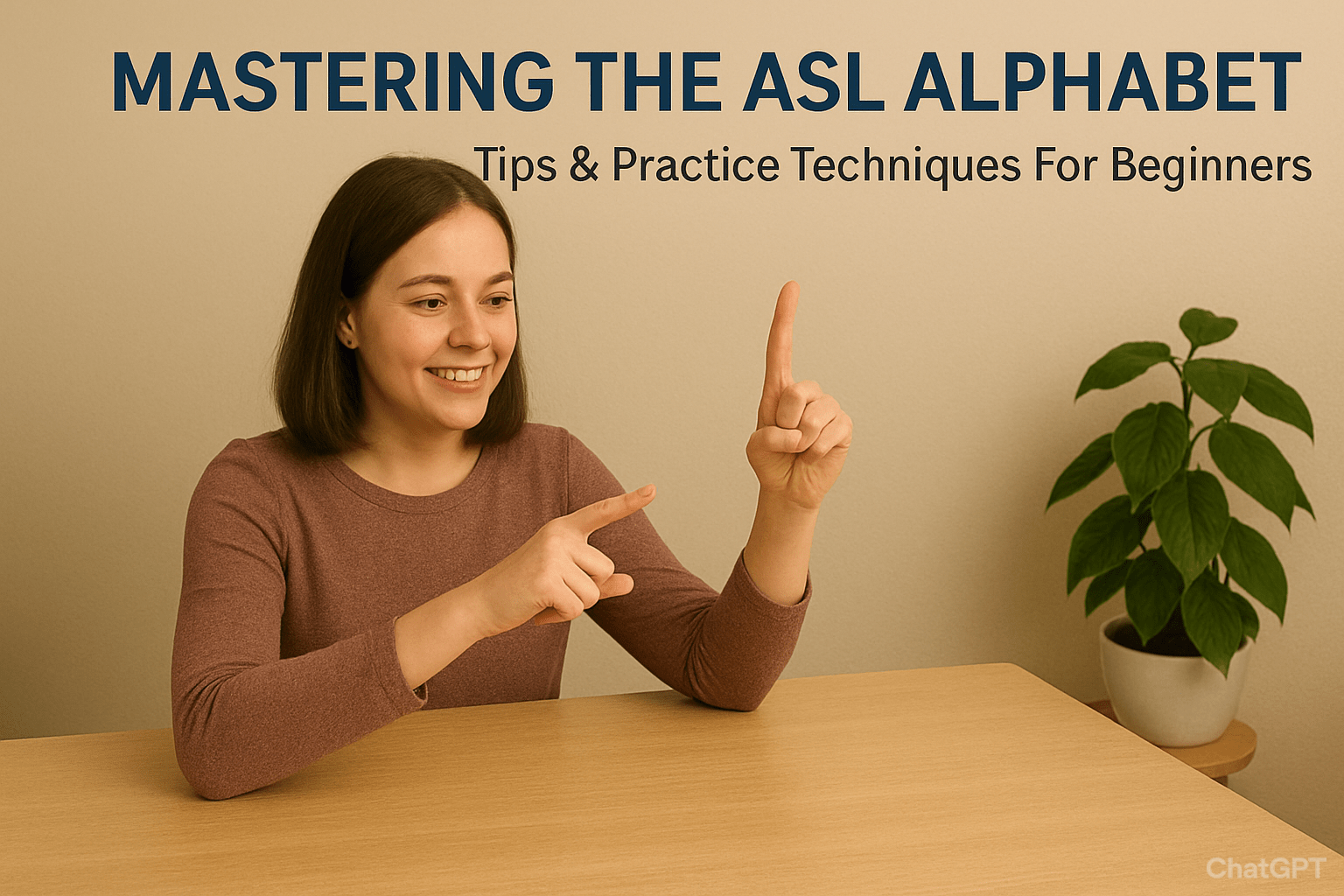Learning sign language is a wonderful journey — one that connects you to a vibrant and expressive community. But just like learning any new language, there are common pitfalls that can slow down your progress. Don’t worry — everyone makes them! The good news is that with awareness and practice, you can correct them early and sign more confidently.
In this article, we’ll look at the most common mistakes learning sign language, why they happen, and how you can easily fix them.
🖐️ 1. Ignoring Hand Orientation
One of the first and most frequent mistakes beginners make is signing with the wrong hand orientation — meaning your palm faces the wrong direction or your fingers point differently than they should.
For example, the difference between signs like mine and yours can depend entirely on the direction your palm faces. A small change in hand angle can change the meaning completely!
How to fix it:
- Always check both hand position and orientation when learning a new sign.
- Practice in front of a mirror or record yourself signing.
- Use clear video demonstrations, such as those on the Sign Academy Dictionary, to compare your handshapes to correct examples.
👀 2. Forgetting Facial Expressions
Sign language is not just about your hands — it’s a full-body language. Facial expressions add emotion, grammar, and tone. Without them, even accurate hand signs can look flat or confusing.
For instance, in Indian Sign Language (ISL) or American Sign Language (ASL), facial cues can indicate whether something is a question, an emotion, or an affirmation.
How to fix it:
- Think of your face as your punctuation marks — use it to express feeling.
- Watch Deaf signers in videos and mimic their facial rhythm.
- Practice signing simple phrases in front of a mirror while matching expressions to intent (happy, surprised, confused, etc.).
⚡ 3. Signing Too Fast
When you’re eager to communicate, it’s easy to rush through signs. But speed often leads to sloppy or unclear movements, especially when you’re still building muscle memory.
How to fix it:
- Slow down — clarity is more important than speed.
- Focus on accuracy before flow.
- Once you’ve mastered the movements, your signing will naturally become smoother and faster over time.
💡 Remember: Even native signers value clear signing over quick signing!
🤲 4. Using Both Hands Incorrectly
In many sign languages, one hand is dominant (your writing hand), and the other is supportive. Beginners often switch hands randomly or use both hands when only one should be active, leading to confusion.
How to fix it:
- Decide which hand is your dominant one and stay consistent.
- Observe how native signers use their hands for specific signs.
- If you’re left-handed, flip the dominant hand used in tutorials to match your own natural movement.
🧩 5. Translating Directly from Spoken Language
It’s tempting to think you can sign word-for-word in the same order as English or Hindi — but that’s not how sign languages work.
Each sign language has its own grammar, syntax, and rhythm.
How to fix it:
- Learn how sentences are structured in your target sign language (like ISL or ASL).
- Watch fluent signers tell stories or explain things naturally.
- Use Sign Academy’s Learn section for lessons that introduce natural sign flow.
🙌 6. Not Maintaining Eye Contact
Unlike spoken communication, eye contact is an essential part of sign language. Looking away can signal disinterest or end a conversation unintentionally.
How to fix it:
- Practice maintaining soft, steady eye contact while signing.
- If you need to pause, use a visual cue (like lowering your hands slightly) instead of looking away abruptly.
🤓 7. Learning Signs Without Context
It’s easy to memorize a bunch of random signs, but without context, it’s hard to recall or use them naturally. Many beginners focus only on vocabulary lists and forget to learn how those words fit into real conversations.
How to fix it:
- Learn signs in themed groups, such as family, food, or daily routine (see Everyday Sign Vocabulary).
- Practice signing short phrases or sentences instead of isolated words.
- Use flashcards or mini-dialogues that connect meaning with use.
💬 8. Not Practicing with Others
Sign language is visual and social. Without real interaction, you’ll miss the nuances — pacing, transitions, and expressive flow.
How to fix it:
- Join online communities or local Deaf meetups.
- Participate in Sign Academy’s discussion forums or comment on learning videos.
- Practice fingerspelling names or sentences with a friend regularly.
🧠 9. Not Reviewing Regularly
Like any skill, signing fades without practice. You might remember signs today but forget them in a week if you don’t revisit them.
How to fix it:
- Set a review schedule — even 10 minutes a day helps.
- Revisit old videos and vocabulary sets.
- Challenge yourself with short quizzes or sign-along exercises.
❤️ 10. Feeling Embarrassed to Make Mistakes
Perhaps the biggest mistake of all is being afraid to make them. Every fluent signer — Deaf or hearing — started out fumbling, forgetting, and confusing signs. What matters most is persistence and connection.
How to fix it:
- Sign proudly, even when unsure.
- Ask for feedback from Deaf friends or fellow learners.
- Celebrate small wins — every sign you learn is a bridge built toward inclusion.
🌱 Final Thoughts
Learning sign language is as much about empathy and patience as it is about skill. If you’re making mistakes, that simply means you’re learning.
Keep your curiosity alive, revisit the basics often, and explore authentic resources like the Sign Academy Blog to deepen your understanding.
You’ll soon find yourself communicating not just with your hands, but with your whole heart. 💖


